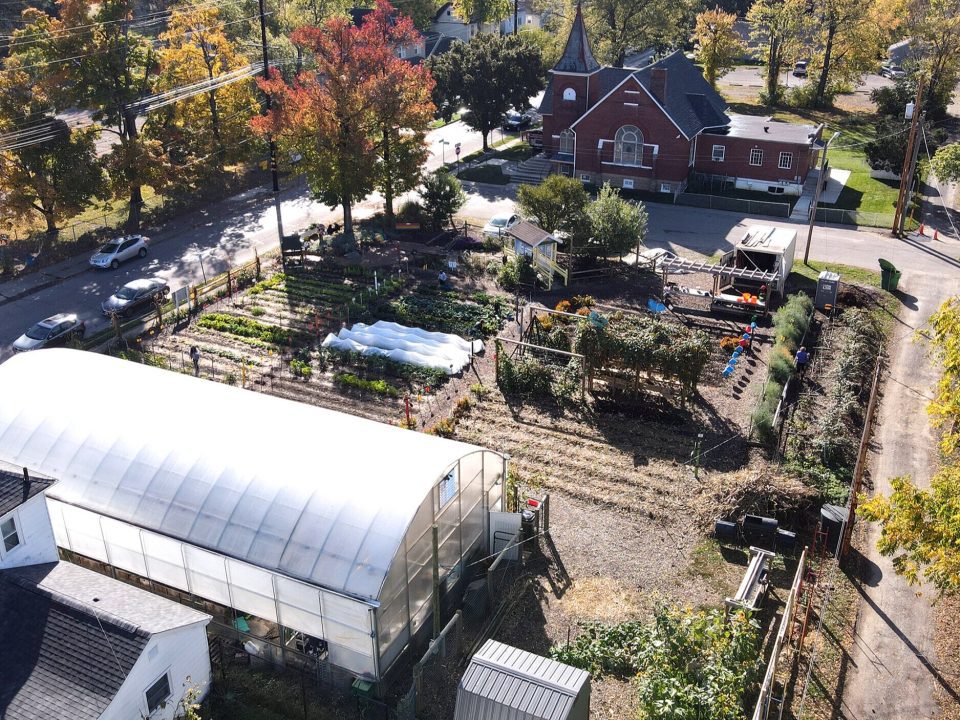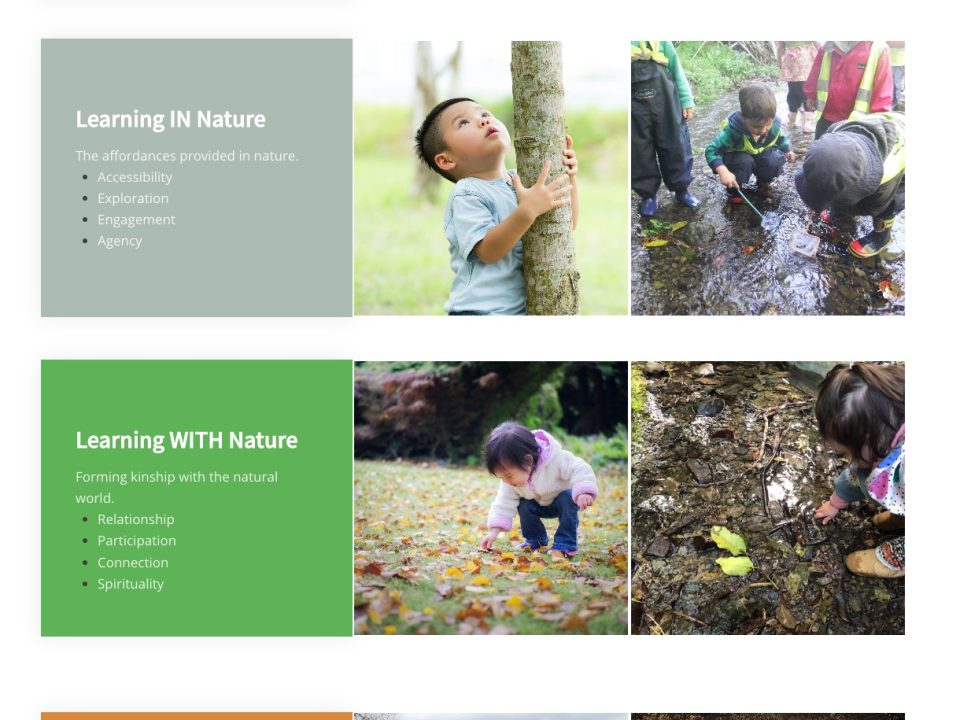Green Halloween at the Governor’s Residence
October 5, 2009Report for Ohio from the National Gathering at the Children and Nature Network
October 8, 2009Student gardeners learn land’s lessons
Edible gardens take root at more area schools
By Sara Cunningham ‘¢ scunningham@courier-journal.com ‘¢ October 3, 2009
Last month, fifth-graders at St. Francis School in Goshen harvested watermelons they had planted in the spring, using their math skills to figure out how far apart to space the plants and science skills to understand how water and direct sunlight would affect their crop.
Advertisement
This month, fourth-graders in a French class will plant garlic. Later in the school year, sixth-graders will plant cucumbers, edamame and eggplant as part of their Asian culture unit.
Eventually, all those foods will be served in the school cafeteria.
We all grow it and learn things about it and then the school eats it for lunch, said fifth-grader John Juridge, 10. It’s just cool.
St. Francis is at the forefront of a national school gardening trend that educators hope will help reverse a finding by the U.S. Centers for Disease Control and Prevention that 13 percent of American kids are obese and 90 percent don’t eat their recommended daily amounts of fruits and vegetables.
It’s about ownership, said Charlie Nardozzi of the National Gardening Association. If they’re the ones that plant the seeds, the ones learning about the plants, the ones writing and reading about the plants, the ones sharing the responsibility of caring for the plants, they are going to want to be the ones who eat those plants. That has huge implications for nutrition and health.
While little data is kept about school gardens, Nardozzi said interest has grown in many parts of the country. Louisville’s Brightside program, which has an outdoor classroom registry, has seen the number jump to 91 this year, up from 31 two years ago.
There is a growing movement of schools that are looking not just for help with beautification projects but for edible gardens, said Brightside’s community education manager Julie Fried.
But few schools are as far along as St. Francis, a private school that has six organic fruit and vegetable plots, Fried said. For any school looking to build an edible garden, they’re kind of the wish-list school.
All 230 students in pre-kindergarten through eighth grade help grow fruits, vegetables and herbs. The school has lesson plans for each age group.
St. Francis is committed to the edible gardening concept because it helps us teach what is really an endless list of concepts in the classroom, but also because the kids need this, said teacher Michael Mahoney, who coordinates the school’s garden curriculum and activities.
Kids are just out of touch with where their food comes from, he said.
That’s the case with students across the country, Nardozzi said.
Kids in school now are really the first generation that has no connection to their rural roots. They aren’t likely to even have grandparents that still farm. They have no idea that a green bean that was just picked tastes different than the one shipped thousands of miles.
Gardening all of a sudden makes trying new foods fun, Nardozzi said, and it gets you outside moving and working.
‘˜It’s hard work’
Part of the lesson is that producing food isn’t easy, Mahoney said.
Just like the colonists and pioneers they learn about in social studies, students don’t use chemicals on their tomatoes, corn and beans. They struggle with bugs, rabbits and deer that mess with their hard work, he said.
It’s harder than just going to the fridge, said seventh-grader Bridget Cantrell, 12. Not everything you plant turns out good. It’s hard work.
It’s a lesson being touted in other U.S. schools, including others in Kentucky, though Fried noted the edible garden idea is more complicated in public schools, which face specific rules under the federal school lunch program.
St. Francis doesn’t participate in the federal lunch program, but some private and Catholic schools do.
One rule is that districts have to work with vendors that guarantee in writing the safety and quality of the food they’re providing, said Julia Bauscher, director of nutrition services for Jefferson County Public Schools.
That guarantee is not possible with food grown by students and volunteers in school gardens, she said.
Eventually I would love to be able to make that connection between school garden to cafeteria.
A taste for gardening
That doesn’t mean some schools aren’t venturing into edible gardening.
It almost comes down to a specific teacher or parent who’s really dedicated to the project, said Bryan Thompson, a naturalist with Jefferson County Public Schools. Gardens are done on an individual school basis in the district.
At Kennedy Montessori Elementary School, students had a salad party at the end of last school year with lettuce they’d grown in the school’s garden. Kaki Robinson, a retired teacher who volunteers her time, worked with the students.
Meyzeek Middle School’s after-school garden club grows vegetables and herbs as part of the Smoketown Community Garden. The club is starting informal cooking classes this year to learn how to eat something that doesn’t come out of a bag, said Tim Baker, the teacher in charge of the school’s gardens.
Chenoweth Elementary has gardens that feature Kentucky crops and those grown by Native Americans and pioneers, including vegetables, fruits, flowers and grasses.
We eat some things in classes or at special events but not in the cafeteria, said Jennifer Taylor, the teacher who heads the effort. A lot of the produce goes to parent volunteers, but that’s still great.
She said it would be exciting to serve the student-grown food in the cafeteria.
I would love to see that some day, she said.
Network takes root
Last summer, John Delautre, head of St. Francis, and other educators, business owners and farmers formed the Kentucky School Garden Network, which helps schools start gardens that produce food students can eat.
We want to reconnect people with food in a purposeful way. We feel like school gardens, introducing this to children early on, is the way to go about this.
The network has a Web site with resources and has started hosting tours of local school gardens. It plans Kentucky School Garden Week in spring 2010.
Ideally, the network would like to see policies changed to support edible school gardens, gather research about them, identify the best practices for using them in schools and build a strong base of resources for schools trying to start their own gardens, said David Wicks, former coordinator of environmental education for JCPS. Wicks and Delautre are on the network’s board of directors.
Really, what the network and schools with gardens are doing is returning to their roots, Wicks said.
This isn’t a trend that’s out of nowhere, he added.
In the 1930s, middle and high schools in Jefferson County all had edible gardens that were used to help supply cafeterias, Wicks said.
It’s not like we’re doing something new. Really we’re reinvestigating what was once pretty common.
Reporter Sara Cunningham can be reached at (502) 582-4335.


